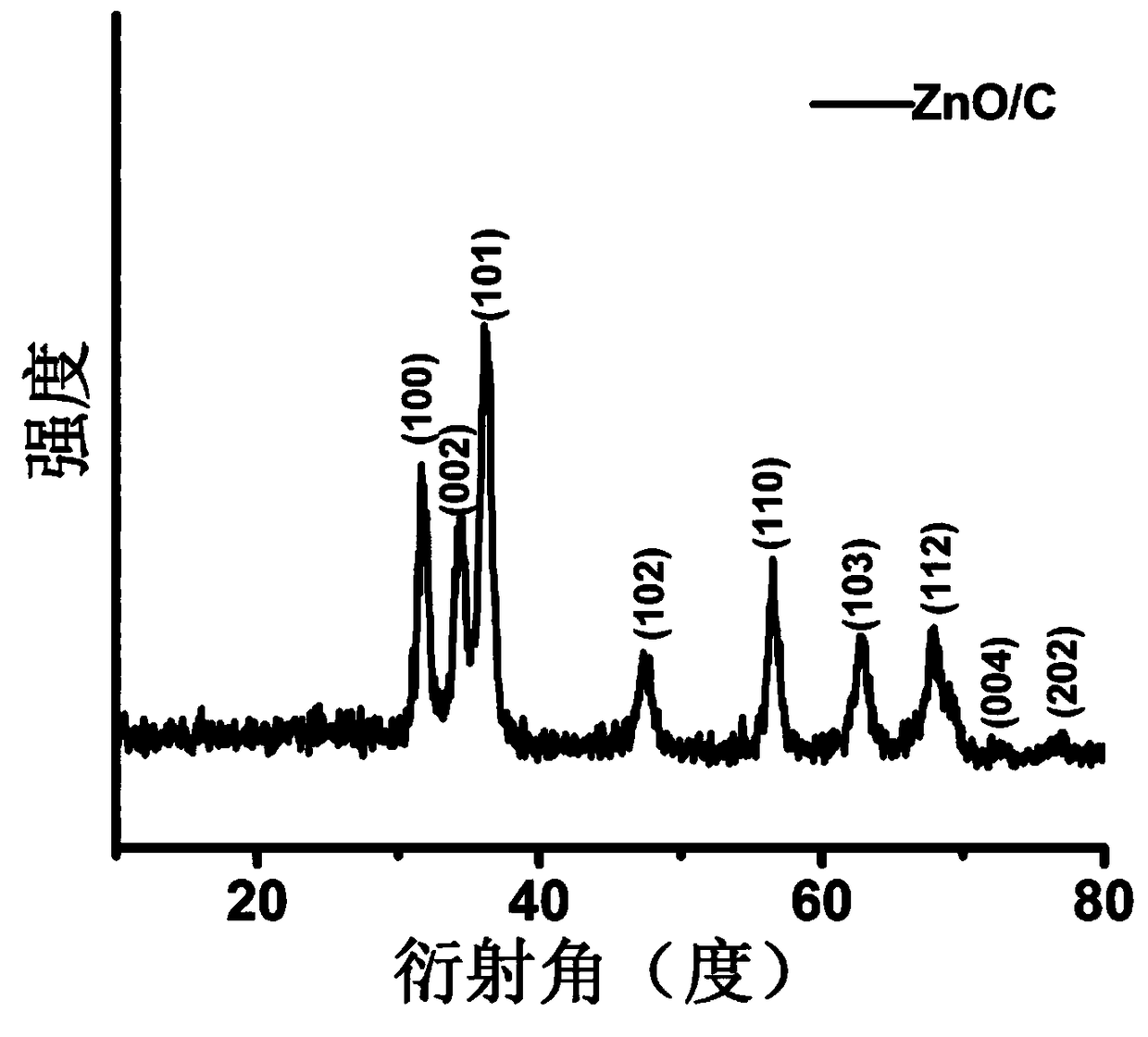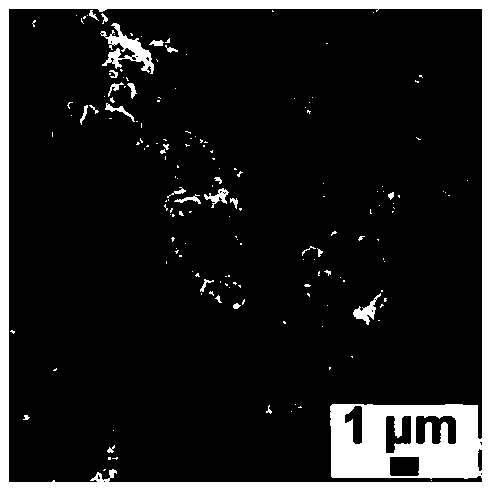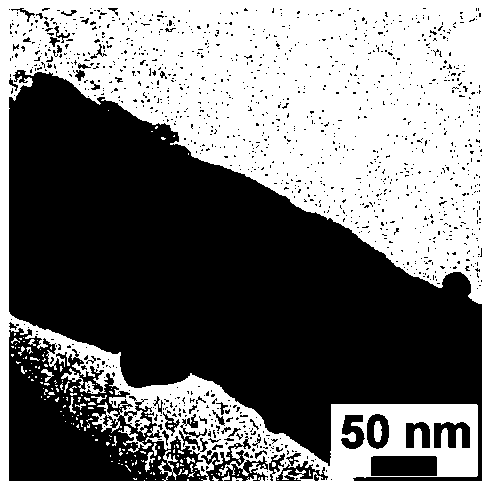Preparation method of zinc oxide/carbon composite material for negative electrode of lithium ion battery
A technology of lithium-ion batteries and carbon composite materials, which is applied in the field of preparation of lithium-ion battery negative electrode materials, can solve the problems of poor conductivity, long preparation cycle, and small specific surface area of zinc oxide, and achieve the purpose of overcoming poor conductivity, improving small specific surface area, Effect of improving electrochemical performance and cycle stability
- Summary
- Abstract
- Description
- Claims
- Application Information
AI Technical Summary
Problems solved by technology
Method used
Image
Examples
Embodiment 1
[0026] Step 1, preparation of electrospinning precursor solution:
[0027] Weigh 0.5054g Zn(CH 3 COO) 2 Dissolve in 10ml of methanol, and stir for 2h, then add to the Zn(CH 3 COO) 2 Add 0.8480g of PVP to the solution, stir for 5.5h and let stand.
[0028] Step two, Zn(CH 3 COO) 2 Preparation of / PVP nanofiber membrane:
[0029] Take 5mL of the precursor solution obtained in step 1 and add it to the syringe, control the positive working voltage to 15kV, and the negative voltage to 1.5Kv, adjust the distance between the receiver and the spinning needle to be 20cm, and the outflow speed of the solution to be 0.15ml / h, to obtain Zn(CH 3 COO) 2 / PVP nanofiber membrane.
[0030] The third step, the preparation of zinc oxide / carbon nanofibers:
[0031] The spun fibers were placed in a tube furnace, fed with argon, and fired at 800°C at a rate of 5°C / min for 2 h. Then cool down to room temperature naturally to obtain zinc oxide / carbon nanofibers.
[0032] in, figure 1 It i...
Embodiment 2
[0037] Step 1, preparation of electrospinning precursor solution:
[0038] Weigh 0.5054g Zn(CH 3 COO) 2 Dissolve in 20ml of methanol, and stir for 2h, then add to the Zn(CH 3 COO) 2 Add 0.8480g of PVP to the solution, stir for 8 hours and let stand.
[0039] Step two, Zn(CH 3 COO) 2 Preparation of / PVP nanofiber membrane:
[0040] Take 8mL of the precursor solution obtained in step 1 and add it into the syringe, control the working positive voltage to 15kV, and the negative voltage to 1kV, adjust the distance between the receiver and the spinning needle to be 20cm, and the outflow rate of the solution to be 0.15ml / h to obtain Zn(CH 3 COO) 2 / PVP nanofiber membrane.
[0041] Step 3, preparation of zinc oxide / carbon nanofibers:
[0042] The spun fibers were placed in a tube furnace, fed with argon, and fired at 800°C at a rate of 5°C / min for 2 h. Then cool down to room temperature naturally to obtain zinc oxide / carbon nanofibers.
Embodiment 3
[0044] The first step, preparation of electrospinning precursor solution:
[0045] Weigh 0.5054g Zn(CH 3 COO) 2 Dissolve in 10ml of methanol, and stir for 2h, then add to the Zn(CH 3 COO) 2 Add 0.8480g of PVP to the solution, stir for 5.5h and let stand.
[0046] The second step, Zn(CH3COO) 2 Preparation of / PVP nanofiber membrane:
[0047] Add the mixed solution into the syringe, control the working voltage to 20kV, adjust the distance between the receiver and the spinning needle to 10cm, and the outflow rate of the solution to 0.2ml / h to obtain Zn(CH3COO)2 / PVP nanofiber membrane.
[0048] The third step, the preparation of zinc oxide / carbon nanofibers:
[0049] The spun fibers were placed in a tube furnace, fed with argon, and fired at 800°C at a rate of 5°C / min for 2 h. Then cool down to room temperature naturally to obtain zinc oxide / carbon nanofibers.
PUM
| Property | Measurement | Unit |
|---|---|---|
| current efficiency | aaaaa | aaaaa |
Abstract
Description
Claims
Application Information
 Login to View More
Login to View More - R&D
- Intellectual Property
- Life Sciences
- Materials
- Tech Scout
- Unparalleled Data Quality
- Higher Quality Content
- 60% Fewer Hallucinations
Browse by: Latest US Patents, China's latest patents, Technical Efficacy Thesaurus, Application Domain, Technology Topic, Popular Technical Reports.
© 2025 PatSnap. All rights reserved.Legal|Privacy policy|Modern Slavery Act Transparency Statement|Sitemap|About US| Contact US: help@patsnap.com



